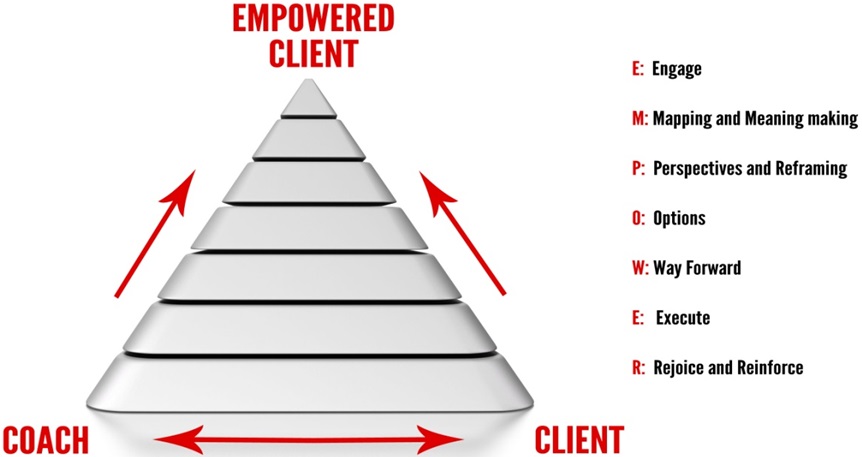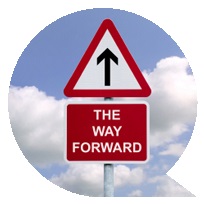A Coaching Model Created by Supreet Oberoi
(Parent Coach, INDIA)
 This coaching model helps in empowering the clients’ by aligning their life, different aspects of their personality with their ‘core-self’. The core of each person being is where he/she comes alive, where they feel the passion and sense of purpose. This model is therefore the vehicle to drive that passion and encourage the clients to make a shift from disempowering dreams to empowered reality, from the virtual to the tangible. The clients realize that the only thing they can really, truly change is their OWN SELF.
This coaching model helps in empowering the clients’ by aligning their life, different aspects of their personality with their ‘core-self’. The core of each person being is where he/she comes alive, where they feel the passion and sense of purpose. This model is therefore the vehicle to drive that passion and encourage the clients to make a shift from disempowering dreams to empowered reality, from the virtual to the tangible. The clients realize that the only thing they can really, truly change is their OWN SELF.
E. Engage And Align
 Initial meeting is set to understand the clients’ situations, listen to them closely and build a good connect / mutual understanding between them and the coach. This clearly leads to “engagement” with the coaching process. Our goals are usually a combination of our vision and values. So I begin by guiding my clients through a self-discovery process. Vision is their imagination and visualization of a bright, beautiful future by the coachee. The values are usually defined by the writings on the wall of our life that are written by our parents, our upbringing, culture, the society we live in, our religion. These may or ay not be the truth but they have definitely become our beliefs and values. Initial meeting is set to understand the clients’ situations, listen to them closely and build a good connect / mutual understanding between them and the coach. This clearly leads to “engagement” with the coaching process.
Initial meeting is set to understand the clients’ situations, listen to them closely and build a good connect / mutual understanding between them and the coach. This clearly leads to “engagement” with the coaching process. Our goals are usually a combination of our vision and values. So I begin by guiding my clients through a self-discovery process. Vision is their imagination and visualization of a bright, beautiful future by the coachee. The values are usually defined by the writings on the wall of our life that are written by our parents, our upbringing, culture, the society we live in, our religion. These may or ay not be the truth but they have definitely become our beliefs and values. Initial meeting is set to understand the clients’ situations, listen to them closely and build a good connect / mutual understanding between them and the coach. This clearly leads to “engagement” with the coaching process.
Our goals are usually a combination of our vision and values. So I begin by guiding my clients through a self-discovery process. Vision is their imagination and visualization of a bright, beautiful future by the coachee. The values are usually defined by the writings on the wall of our life that are written by our parents, our upbringing, culture, the society we live in, our religion. These may or may not be the truth but they have definitely become our beliefs and values. Values are what we learn and imbibe over the years and it gets adapted and fused into our personality. Some of these adaptations are valuable and healthy while others may cause discomfort and stress to the coachee. So as a coach along with the coachee, we need to identify/ discover where the client is truly centered. Talking about their peak happy experiences or their future self- visualization can do this. Once the core-self is identified, we as a coach should amplify this in client the most, as this is where their vision and values are in total alignment. Once this state is identified, the coachee can now define a specific goal and not a general goal. By specific goals I mean that the client is very clear of what’s important to him today, what he really values the most and not what should based on the old belief system, his writings on the wall etc. When everything is in alignment and harmony and no inner conflicts are pulling him in different directions, he can DEFINE HIS GOALS.
M. Mapping And Meaning Making
 In this step the real objectives of the coach is to
In this step the real objectives of the coach is to
a) Understand or “map” the communication/ learning preferences of the client and
b) Reduce the confusion / clutter and come to a MUTUAL & AGREED UNDERSTANDING of the issues involved (i.e. meaning making).
After defining the goals, I then assess the communication / learning style of the client, that is, how he grows and develops better. This helps me to facilitate my future sessions with him and also helps the clients the way they want to be helped. By communication style I mean that with some clients the coach has to be an active listener as these clients love to speak out their thoughts loudly and have absolutely no inhibitions of talking about anything. There is another kind of client who has a lot of inhibitions, reticence and is not comfortable discussing his life. These clients require a lot of powerful questioning as that gives them a direction to think and talk on. The last category is the ones whose minds are cluttered with thoughts and they fall short on words to express. These clients need paper and pen to express themselves maybe by scribbling or drawing their thoughts. Once their preferred communication channel is known basically by exposing them to the above three communication styles and observing their comfort zone, I move ahead with my next step.
P. Perspectives And Reframing
 Sometimes we may find it useful to help the client look at situations from different perspectives and / or reframe the clients’ frame of reference that is, the way he is looking at a problem or the way he perceives it to be. This maybe required at times when we find our client totally stuck up/hamstrung with situations in his life and he cannot move forward i.e. sometimes a client maybe blaming himself for every wrong doings in his life. In such situation asking him to pretend play a similar situation BUT help him to find other causes that could have been responsible for this situation rather than him. Have them see and feel the difference between the two perspectives. If even then you feel that the client is still stuck up, then you can give a statement followed by a question to take your client on a path of guided discovery.
Sometimes we may find it useful to help the client look at situations from different perspectives and / or reframe the clients’ frame of reference that is, the way he is looking at a problem or the way he perceives it to be. This maybe required at times when we find our client totally stuck up/hamstrung with situations in his life and he cannot move forward i.e. sometimes a client maybe blaming himself for every wrong doings in his life. In such situation asking him to pretend play a similar situation BUT help him to find other causes that could have been responsible for this situation rather than him. Have them see and feel the difference between the two perspectives. If even then you feel that the client is still stuck up, then you can give a statement followed by a question to take your client on a path of guided discovery.
Example:
a) What can you do to be a great leader?
b) How do you think you would feel if you replace expectations of things we don’t have with gratitude for things we have?
O. Options And Motivation OPTIONS AND MOTIVATION
 The client comes to a coach because he wants to change or achieve something. By now they have their goals defined. Yet somewhere they feel complacent or stuck with the situation they are in. once clients can see their current approach to the issue is not helping them meet their goals / aspirations, we as coach then need to talk about what they feel needs to be changed. Various options therefore are then discussed and new choices would need to be made if required. Once the changes and options have been clearly identified / defined then perhaps we would need to look at the motivation client has to introduce to make the required changes. Also, some work would need to be done to deal with resistance to change, lack of confidence or some fears / concerns till the client is ready to commit to change. Just like in terms of money where change is small, Change has to be introduced initially in smaller denominations so that the client does not perceive it as insurmountable. Change is the price we pay for a better and propitious future.
The client comes to a coach because he wants to change or achieve something. By now they have their goals defined. Yet somewhere they feel complacent or stuck with the situation they are in. once clients can see their current approach to the issue is not helping them meet their goals / aspirations, we as coach then need to talk about what they feel needs to be changed. Various options therefore are then discussed and new choices would need to be made if required. Once the changes and options have been clearly identified / defined then perhaps we would need to look at the motivation client has to introduce to make the required changes. Also, some work would need to be done to deal with resistance to change, lack of confidence or some fears / concerns till the client is ready to commit to change. Just like in terms of money where change is small, Change has to be introduced initially in smaller denominations so that the client does not perceive it as insurmountable. Change is the price we pay for a better and propitious future.
W. Way Forward
So now it becomes imperative to find out what motivates the client and what it will take for him to move from trying-phase to a commitment-phase. Thus as a coach we need to create awareness of motivating structures that will help the client to move forward to achieve goals. The client will either notice these structures ( if already existing in their life) or create some that will motivate or empower them, eg: maintaining a diary, being accountable to someone, making a daily planner etc. below are few questions we as a coach can ask to help them find their structures:
a) What has motivated you in the past?
b) What things can you bring into your routine to support your endeavour?
c) What are those things, your daily routine actions, that empower you, that help you to accomplish small daily tasks?
d) Is the motivation to succeed stronger than the fear of failure and accountability.
E. Execute
The distance between your dreams and reality is called action. By now the client has his specific goals defines and the motivating structures in place.
All he now needs to do is to attach an emotion to these goals and achievements, make them visualize success, attach themselves or connect to that visceral thrill that they will experience once they achieve their goals.
Now TAKE ACTION
R. Rejoice And Reinforce
 When you take action, you achieve your goals and when you achieve your goals, you succeed. When you succeed, celebrate and REJOICE. Celebrate small wins. Set a milestone at a shorter distance and celebrate small wins along the journey to reach the destination.
When you take action, you achieve your goals and when you achieve your goals, you succeed. When you succeed, celebrate and REJOICE. Celebrate small wins. Set a milestone at a shorter distance and celebrate small wins along the journey to reach the destination.
This will motivate the client and set his will to achieve in motion and provide traction to his purpose.
After celebrating your success, take what you have got, what you have learnt and bring it to someone else. When you bring it to someone else it continues that cycle of achievement, joy of adding value in someone else’s life, affirmation and meaning in your own life. This is reinforcing the entire steps of E.M.P.O.W.E.R pyramid.
Conclusion:
In all the above 7 steps, the most important core competency of coaching that comes forth is ACTIVE LISTENING. How deeply and intently you listen, how often you listen and how respectfully you listen are significant. Powerful listening builds the foundation of our coaching relationship. When you focus deeply and hear not only the facts of the message but also what is not being said, you have access to more information and get a complete picture as if you have connected to his subconscious mind. As a coach you can listen for underlying emotions, roadblocks, resistance, excitement and passion. What is underneath the words contains important information that one can use to motivate, generate solutions etc.
Energising Empowering thoughts:
Energy is neither created nor destroyed, but your future can. Empower yourself to make the right choice
Go, create a greater future, do the greater good and achieve the greater bliss. It is all within you if you gaze at your inner self
Even the universe was created out of small imperfection, so don’t bother achieving perfection but invest in perfecting the achievements
When I talk I hear, when I hear I care, when I care I connect and when I connect I empower myself with abundant opportunities


